https://www.lifegate.it/fagioli
- |
- Beans are legumes widely used in the Mediterranean diet.
- It is an important source of vegetable proteins, but also of fiber and micronutrients.
- Boasting various beneficial properties, they are to be considered a valuable ingredient to put on your plate.
Beans originate from Phaseolus vulgaris, a globally widespread plant belonging to the legume family.Distinguishing themselves in numerous varieties, they fall into the broader group of legumes, placing itself fully among the Mediterranean style food options.The beans they offer a non-negligible nutritional richness, sometimes underestimated, adapting to different dietary and health needs.
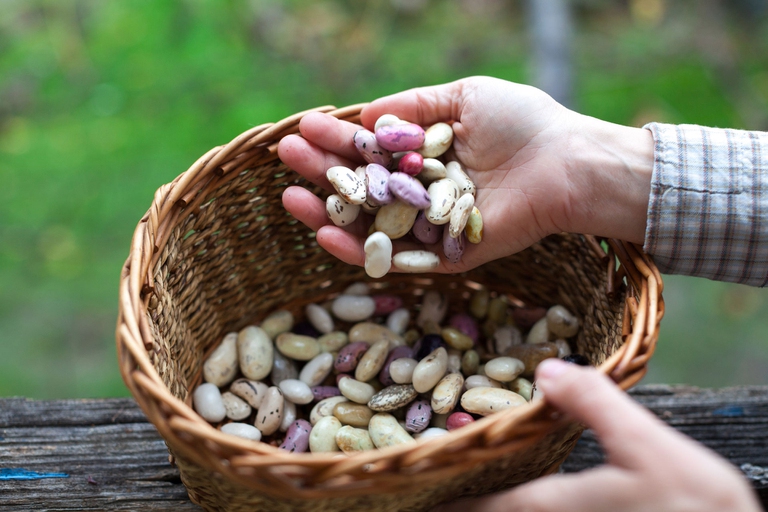
Nutritional values of beans
A standard quantity of 100 g of beans (dried cannellini) contains 45.5 g of carbohydrates, of which 2.9 g are made up of soluble sugars.There protein share, a medium biological value, corresponds to 23.4 g, while the lipid fraction is negligible, amounting to approximately 1.6 g.Taking into account the macronutrient composition, the energy content of 100 g of dried beans corresponds to 314 kcal.The amount of fiber total, which represents an important feature of this food, is equal to 17.6 g, divided into 15.25 g of insoluble fiber and 2.3 g of soluble fibre.Among the micronutrients, the following stand out B vitamins, such as thiamine, niacin and folate, but also some minerals, such as potassium (1411 mg), magnesium (170 mg), copper (0.7 mg) and iron (8.8 mg).The sodium intake is instead reduced, amounting to approximately 5 mg.
Properties of beans
Rich in potassium and magnesium, but also low in sodium, beans are useful in the control of arterial hypertension.Furthermore, the contribution of soluble fiber and phytosterols, which acts positively on blood cholesterol levels, is not negligible.Overall, therefore, they are a food favorable to health cardiovascular well-being.They boast a low glycemic index, adapting to the nutritional needs of the diabetic subject.Due to the same characteristic (moderate glycemic index), but also due to the significant contribution of proteins and fibre, the consumption of these legumes lends itself to a longer lasting feeling of satiety, and is therefore indicated in low-calorie diets.The fiber and oligosaccharides contained are optimal components for the stimulation of a microbiota healthy.Like legumes in general, beans are a beneficial food for intestinal regularity. Rich in folate, whose intake contributes to the correct neurological development of the fetus, are an advisable food during pregnancy.
The beans also feature a significant iron content, although it is "non-heme" iron (less bioavailable when compared to the "heme" form obtainable from animal foods).In any case, they represent a good source of this mineral, which can be exploited as part of the vegetarian and vegan diet;these dietary styles, in addition, benefit from the consumption of legumes and related vegetable proteins.A prospective study, which involved more than 32 thousand male individuals, associated the consumption of legumes with lower risk of benign prostatic hyperplasia.The composition of beans does not lack, among other things, useful substances in the prevention of some forms of cancer.The components in question, in addition to fiber, include saponins, inositol and resistant starch.
Because legumes are sustainable
Beans, like other legumes, are produced by legumes, which boast the ability to fix atmospheric nitrogen.This enriches the soil with organic substance, contributing to greater water retention and soil fertility.Overall, the cultivation of legumes is sustainable for the environment, associated with modest water expenditure, reduced use of synthetic fertilizers and low carbon dioxide emissions.
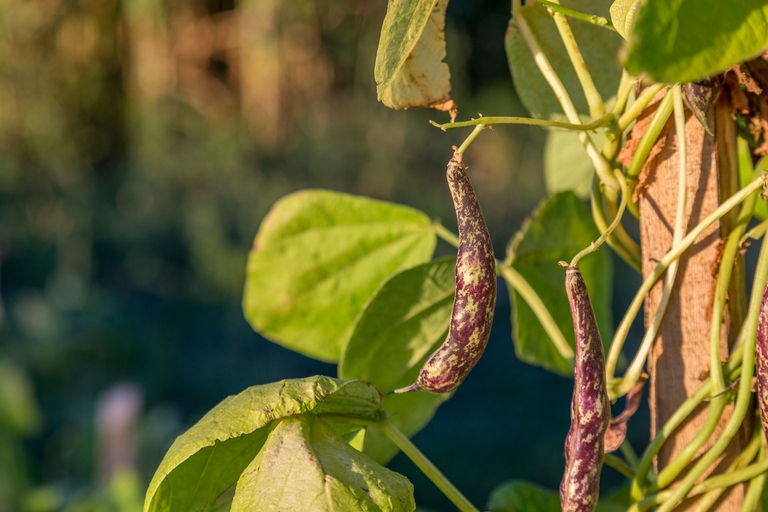
How many beans to consume
As regards quantities, the guidelines for healthy eating include beans in the broader group of legumes.A portion of dried beans corresponds to approximately 50 g, amounting to 150 g for canned or frozen ones.In general, it is possible to consume legumes even 3 or 4 times a week, alternating and/or combining the types.The quantitative aspects, in any case, may vary depending on nutritional needs, dietary requirements and subjective factors (for example intestinal pathologies).
Varieties of beans
Widely cultivated throughout the world, beans stand out in more than 400 varieties. The differences concern the features of the pod and the seed, as well as some traits of the aroma and consistency.The nutritional and health properties, however, are quite similar.Here are some of the best-known varieties:
- Cannellini beans:small and white on the surface, cannellini beans represent a decidedly common variety with a weak flavour.They are easily used in traditional Italian recipes.
- Borlotti:they are recognizable by their intensely colored pod and their striped, medium-large seeds.On an aromatic level, it is a tasty and floury variety.They are great for winter soups.
- Whites from Spain:rather large, flattened and similar in color to cannellini beans, they boast an inviting pulp and a not too strong aroma.They lend themselves to various recipes, such as soups and stews.
- Azuki:more exotic than other varieties, they are part of Japanese cuisine.It is a small, red legume, with a rather sweet aroma.It is no coincidence that azuki are also used for sweet preparations.
- Blacks:this variety is widespread in central and southern America.The seeds are small and dark, while they are particularly compact even at the end of cooking.However, black beans remain versatile, also adapting to summer salads.
- Cowpeas:the name of these legumes is due to the black spot that stands out on the light surface.These are small legumes characterized by a thin casing, which makes them easier to digest.
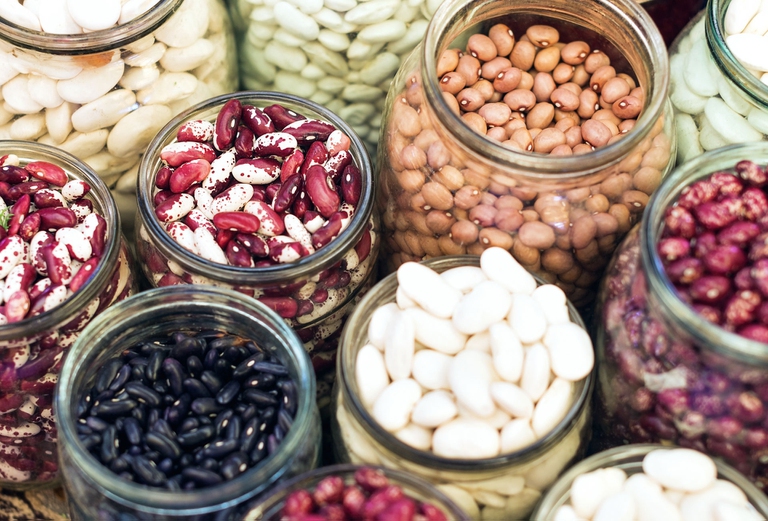
Beans and uses in the kitchen
The most frequent use of beans involves a classic pairing with pasta, taking advantage of the simplicity and effectiveness of the preparation.Beyond taste, this combination satisfies an important nutritional aspect, linked to protein completeness.Like other legumes, in fact, beans are deficient in some amino acids (cysteine, methionine), easily obtainable from cereals.The latter, among other things, are deficient in lysine, which is instead supplied by legumes.In essence, legumes and cereals complement each other, representing a functional combination of protein intake.This criterion is also used to create foods free of animal proteins.An example of this are vegan burgers, based on legumes (such as beans), breadcrumbs and/or cereal flours.
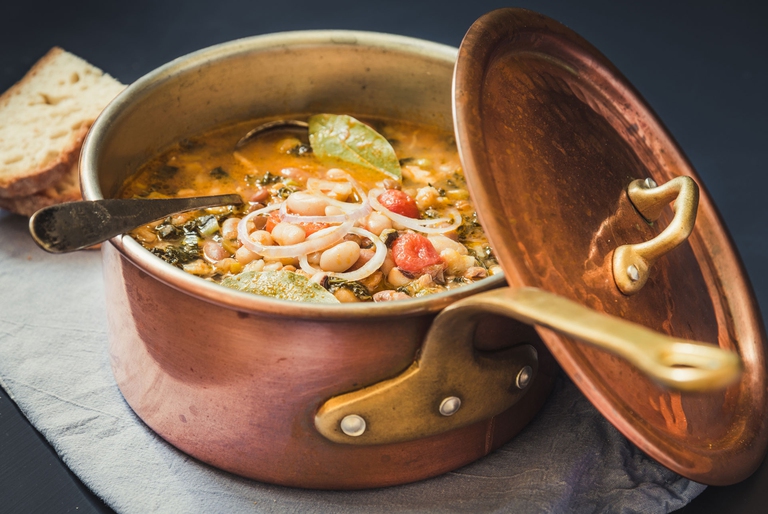
Beans pair effectively with leafy vegetables.A typical Neapolitan preparation, la bean and escarole soup, offers an excellent example of consistency and authenticity.There is no shortage of combinations with foods of animal origin and, in particular, with those of the sea.In this regard, the first courses with the addition of clams and mussels are interesting, as are the second courses based on cuttlefish and beans.
Adverse effects and contraindications of beans.The role of soaking
The best known adverse effect associated with the consumption of beans is, without a doubt, flatulence.They contain a certain amount of oligosaccharides, which, once fermented by the intestinal bacterial flora, produce gas. To mitigate the phenomenon, it is possible to use, for dried beans, one long soaking phase (10-12 hours), adding a fragment of kombu seaweed, useful for reduce fermentable components.Furthermore, subsequent cooking must be accurate.
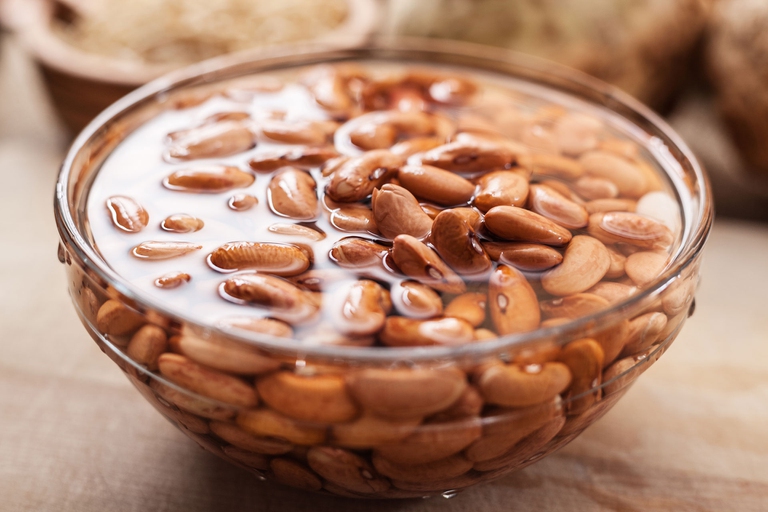
In any case, it is important to act gradually, using gradually increasing quantity and frequency of consumption.Those who suffer most from this inconvenience can, in any case, opt for hulled legumes.Generally speaking, beans are contraindicated in case of nickel allergy, while it is preferable to consume them in moderation if you suffer from hyperuricemia.By providing FODMAPs (short-chain carbohydrates poorly absorbed in the small intestine), beans could make themselves unsuitable in case of irritable bowel syndrome, although the tolerability of the "incriminated" foods is somewhat subjective.Containing a toxic substance, known as phytohemagglutinin, they should never be consumed raw (even though this is a rather remote eventuality).Soaking and cooking, however, solve this problem.
FAQs
- What are beans good for? They are beneficial for cardiovascular health and intestinal well-being.They also represent a suitable choice for diabetic patients and pregnant women.By contributing to the feeling of satiety, beans are functional in the low-calorie diet.Their consumption, and that of legumes in general, helps prevent benign prostatic hyperplasia and some forms of cancer.Beans are also rich in iron.
- How many times a week can you eat beans?In general, it is advisable to consume legumes 3-4 times a week, choosing different types from time to time (including beans).
- When not to eat beans? These legumes are contraindicated for those allergic to nickel, while they should be consumed in moderation in case of hyperuricemia.Sometimes, beans are not very suitable in the presence of irritable bowel syndrome.Due to the phytohemagglutinin content, they should only be consumed after cooking.
- Can those with high cholesterol eat beans? The consumption of all legumes helps control blood cholesterol levels.It is, therefore, a food suitable for those with high cholesterol.
- Can someone who is constipated eat beans? By virtue of the fiber intake, the consumption of beans is functional in the management of constipation, making it therefore advisable.
